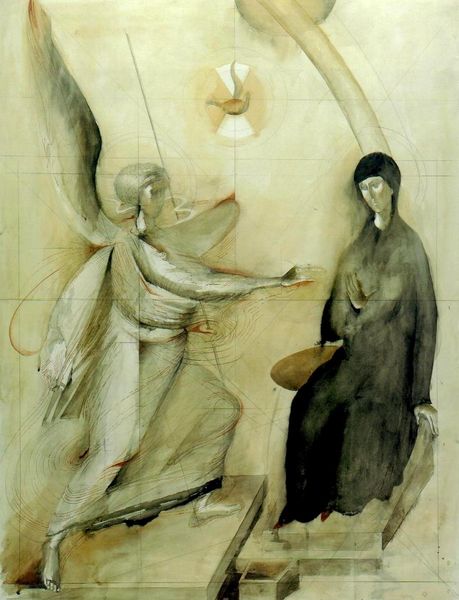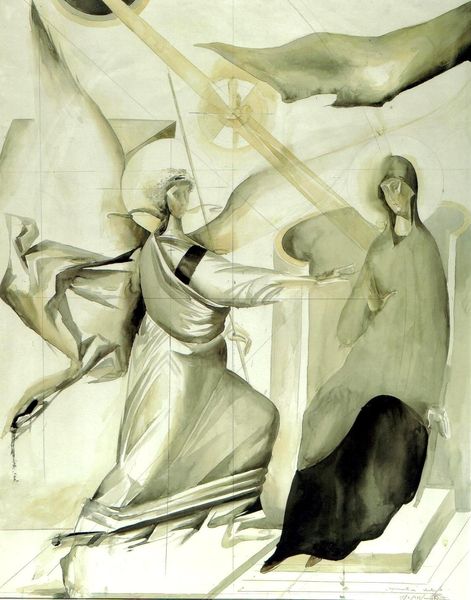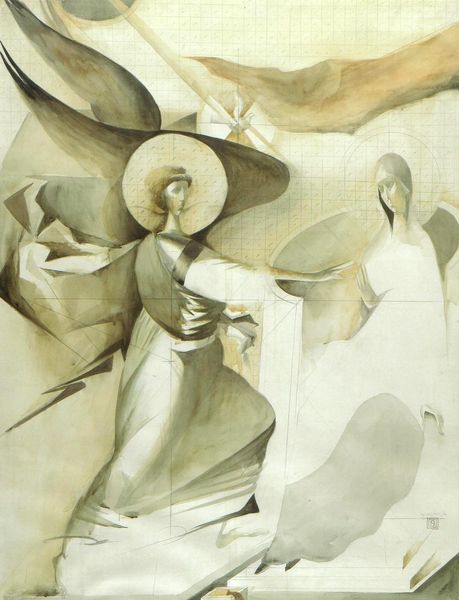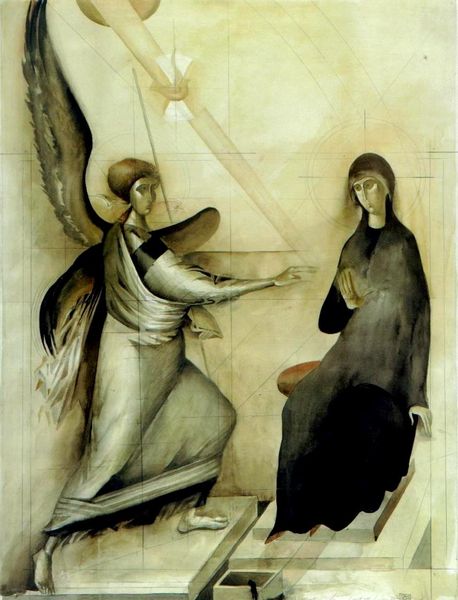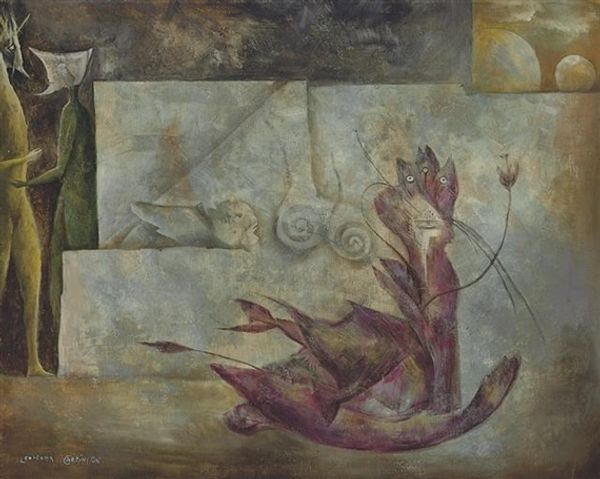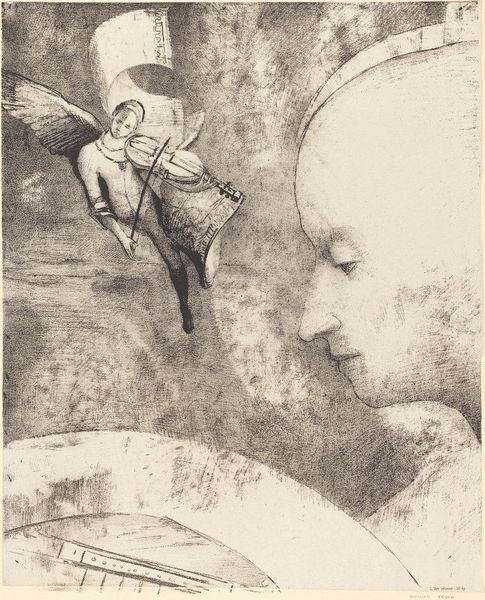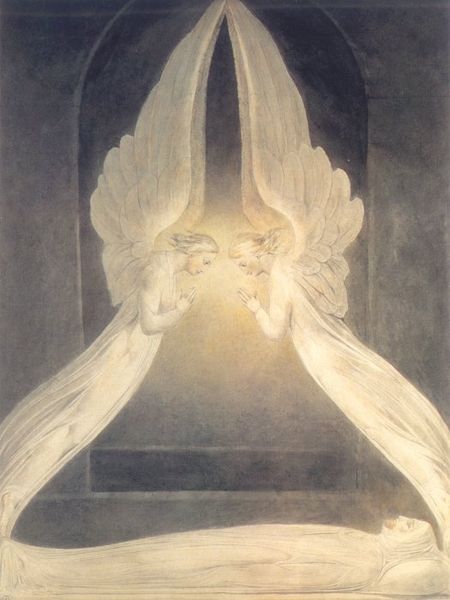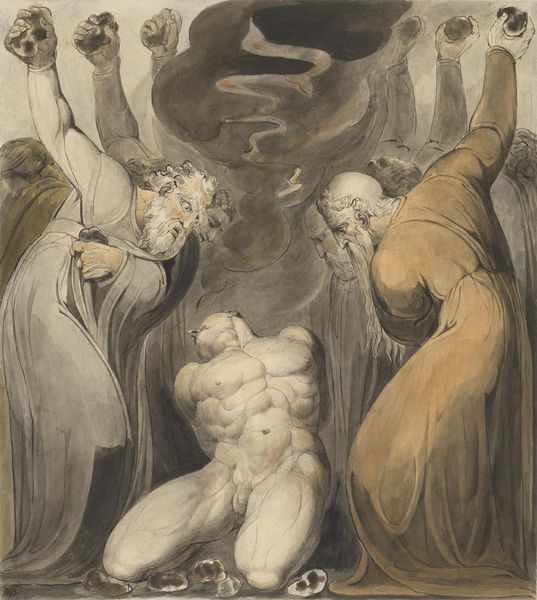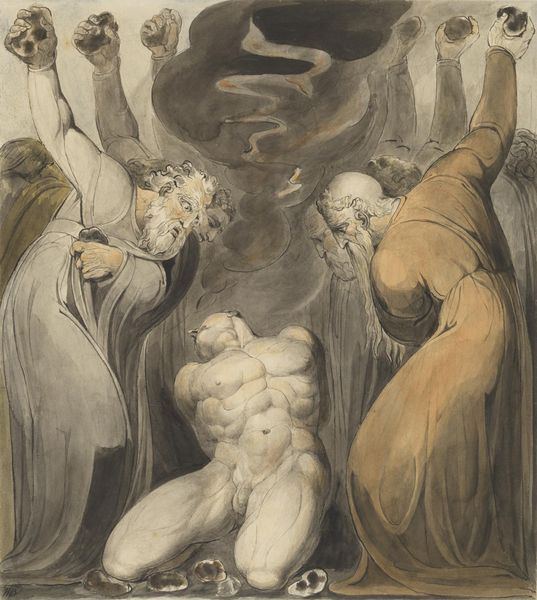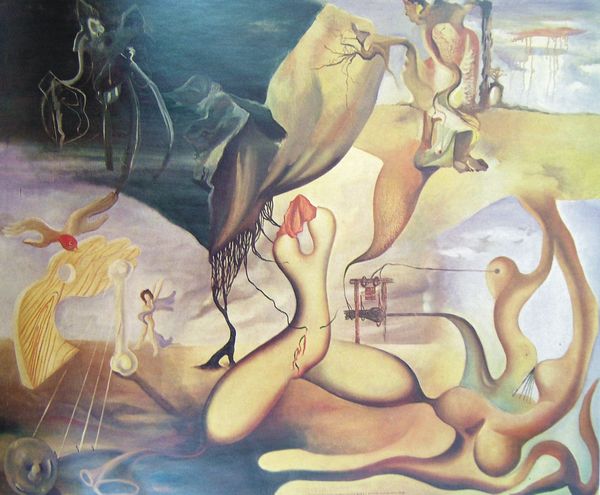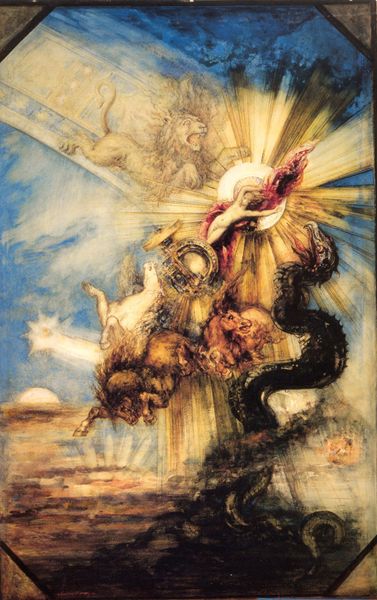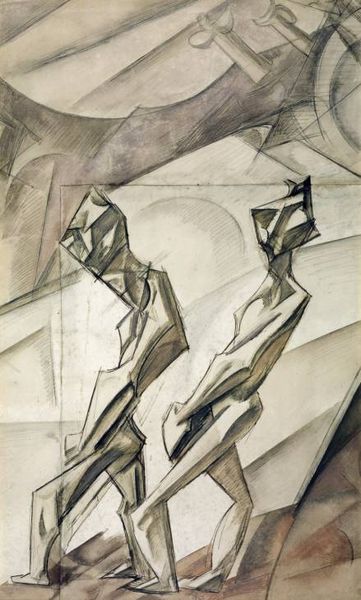
painting, watercolor
#
narrative-art
#
painting
#
landscape
#
charcoal drawing
#
figuration
#
watercolor
#
geometric
#
modernism
#
watercolor
Copyright: Sorin Dumitrescu,Fair Use
Curator: Here we have Sorin Dumitrescu’s "The Annunciation (Study 3)," an intriguing example of modern exploration into traditional religious narratives through watercolor and charcoal drawing. What strikes you first about this interpretation? Editor: The color palette gives me pause; it feels so muted, almost drained of vibrancy. It adds an unexpected layer of somberness to a scene usually depicted with light and joy, but does that make the central figure Mary passive instead of actively surrendering? Curator: Muted colors often allow deeper symbolic resonances. This work is from a series of studies, and here, I find Dumitrescu deconstructs the visual language of traditional Annunciation scenes. Note how he renders the figures in soft watercolors, as spectral and nearly abstract shapes that hint at ethereal forms of transition and potentiality, rather than definite statements. Editor: Absolutely. But the modern landscape style also removes this scene from a particular place or time, abstracting the dynamics and suggesting the idea of eternal themes being recycled in the historical theater. Mary's seeming acquiescence is framed by patriarchy, religion, class, and her assigned biological destiny. How does her individual autonomy show here in the face of monumental expectation? Curator: Her individual will might be inferred through absence; through the reduction of detail and definition in this form we confront a visual paradox: in erasing some explicit declarations, the image can generate possibilities for varied projections and active dialogues with the viewer. And how she takes her traditional role might have ripple effects through culture over vast stretches of time. Note also how the lines direct our attention and invite us to decipher how we have absorbed and reproduced the historical power structures ourselves. Editor: I can see how those geometric forms pull the divine announcement apart. This forces the viewer to reconcile Mary’s position in the scene, her relation to religion, culture, gender, history, and even her interior landscape. What power remains when an individual negotiates and redefines those roles even now? Curator: Exactly. The study becomes an invitation to participate in a complex dialogue about acceptance, destiny, and transformation. Editor: This artwork is very revealing about our engagement with this symbolic episode and shows just how relevant the old stories continue to be today.
Comments
No comments
Be the first to comment and join the conversation on the ultimate creative platform.
